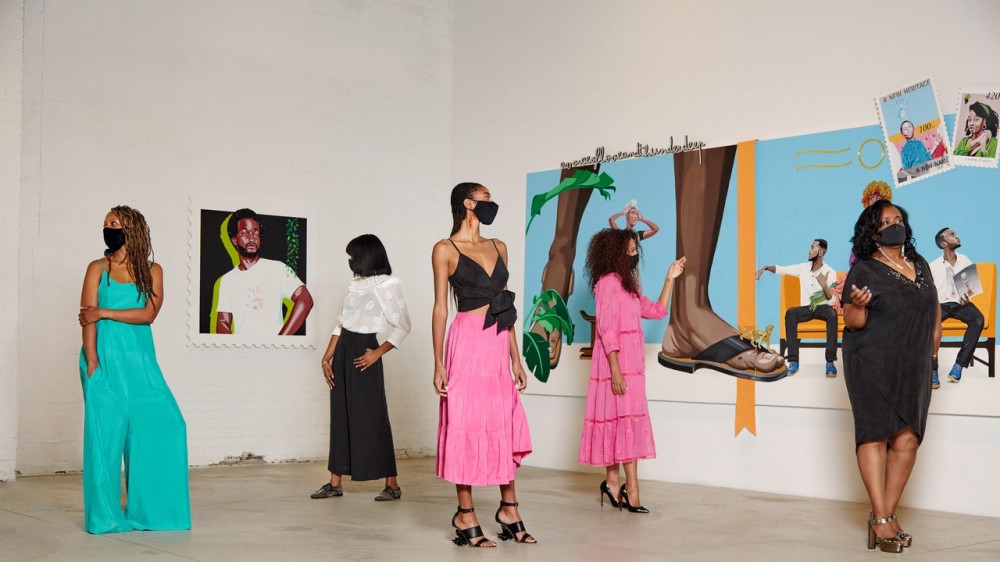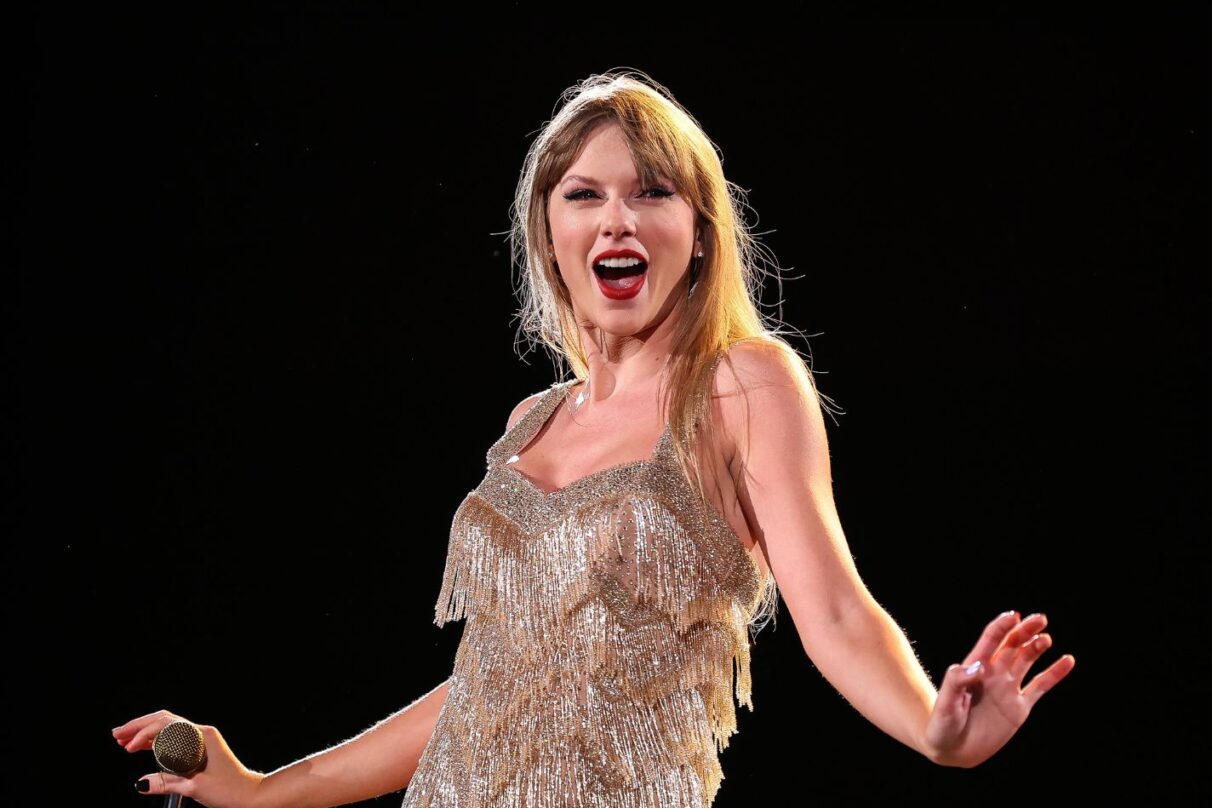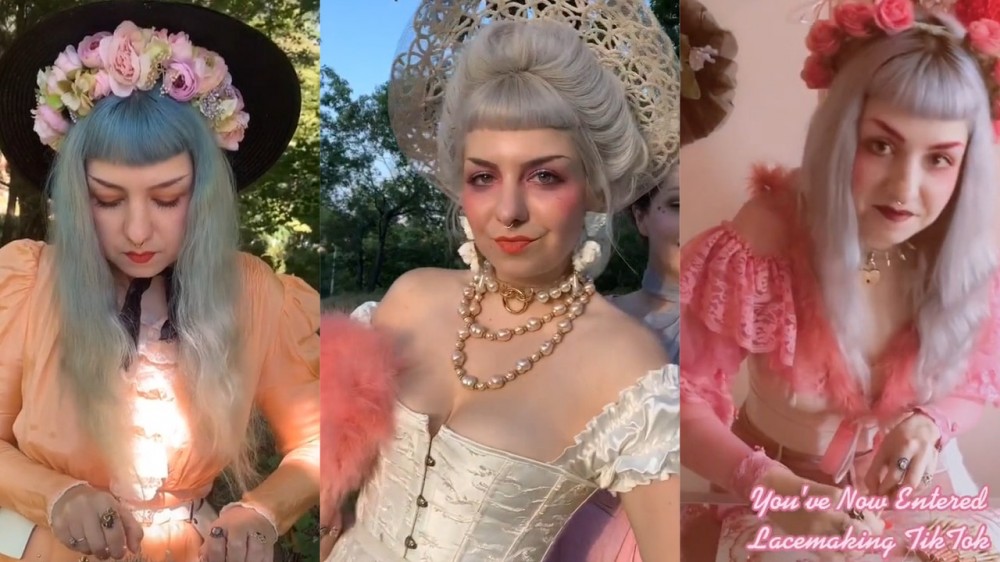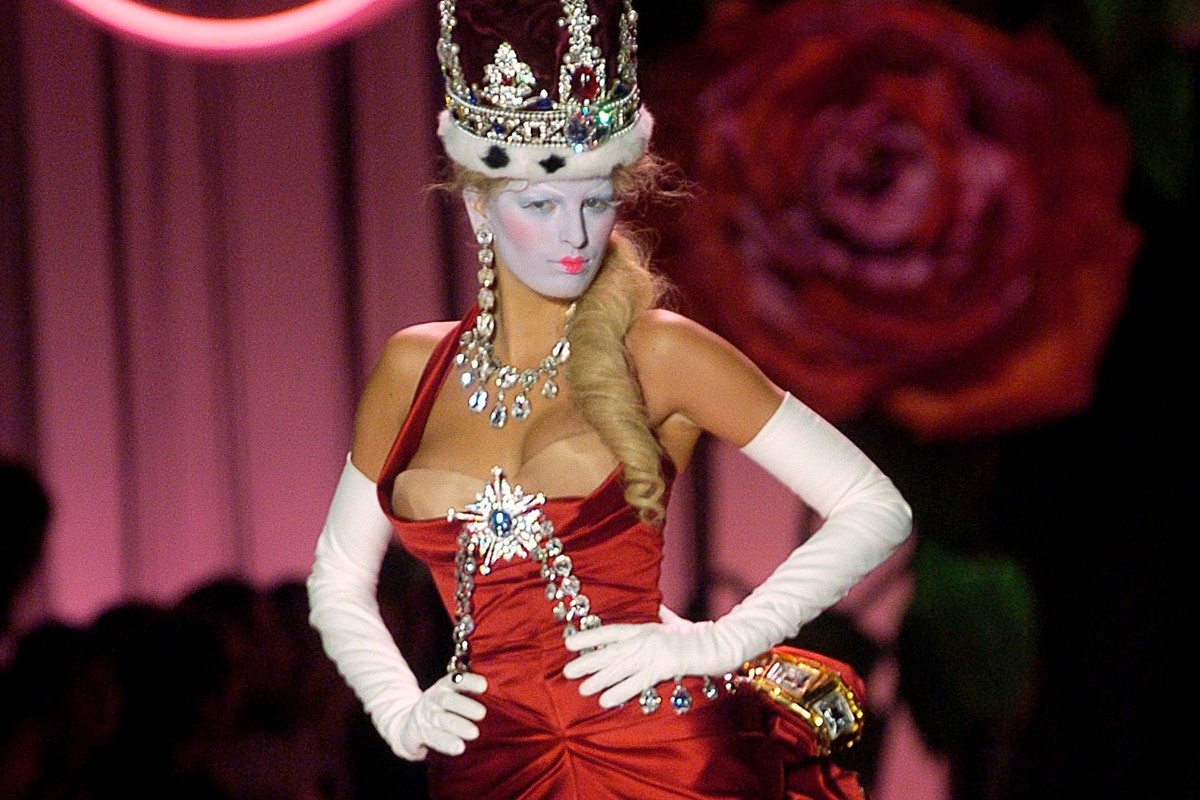
The Mid-West
In Chicago, Minneapolis, Detroit, and other Midwestern cities, a distinctive fashion vision has emerged: One that marries vibrance and practicality, accessibility and glamour. For creatives like Azeeza Khan and Marion Parke, distance from the flash and dash of the coasts has been key, allowing them the time and space to create. Not to be overlooked, though: the welcome wagon rolled out by locals, even within their fledgling design communities. On the growing fashion scene in Indianapolis, Union Western Clothing’s Jerry Lee Atwood says: “It’s been really amazing to see a community so genuinely invested in seeing other people succeed.”
Kristopher Kites
Chicago, Illinois
For the past two years, Kristopher Kites has been making playful plastic pendants out of comic-book figurines, transforming his childhood obsessions into wearable works of art. “Watching old cartoons, I was like, Wow, this gives me an emotional feeling of feeling good, but how can I make that physical?” he explains. Lately, the South Side native has added home goods to his repertoire and become the inaugural designer in residence at RSVP Gallery, the cult-favorite Chicago boutique cofounded by Don C and Virgil Abloh; but more is still to come. “I design clothes and different jewelry pieces, but I’m also working on music, and I want to act,” Kites says. “I just think of myself as a creative.” ifakemakeclothes.com—Marley Marius
Sheila Rashid
Chicago, Illinois
When Chance the Rapper wore Sheila Rashid’s signature denim overalls to the VMAs in 2016, he instantly put her self-titled fashion label on the map. Much like the music of the Chicago hip-hop artist, Rashid’s custom workwear pieces reflect the down-to-earth swagger of the Windy City. “Living here, you really need clothes that look and feel good; but more than that, they need to stand up to the elements,” she says. The designer grew up on the South Side of the city and understands the transformative power of community. “A lot of us work independently—we share the resources we have with our peers. In fact, supporting each other is what we live for.” sheilarashid.com—Chioma Nnadi
Union Western Clothing
Indianapolis, Indiana
Few garments are quite as American as the Nudie Suit, the bedazzled and bejeweled ensemble popularized by tailor Nudie Cohn in the late ’50s and the ’60s—and worn, most famously, by Elvis. It’s only fitting, then, that Nudie’s legacy is being carried on in the heart of the Midwest, where tailor Jerry Lee Atwood (and his London-based partner Joe David Walters) whips up custom interpretations of the embellished suits for 21st-century artists like Post Malone, Lil Nas X, and Orville Peck. “When you tell someone in Indianapolis that you’re a fashion designer, the first question they usually ask is, ‘Are you visiting?’ ” Atwood says. “There wasn’t a lot of infrastructure here to support fashion—that’s changing, thanks to a lot of hard work from people in the community.” Social media has been a boon, but as the business grows, Union Western expects to stay put. “It’s been really amazing to see a community so genuinely invested in seeing other people succeed,”Atwood says. unionwestern.com—Steff Yotka
Azeeza
Chicago, Illinois
For lifelong Chicagoan Azeeza Khan, her city is at the heart of everything she does. “My grandmother gave her entire savings so my father could leave India to come here to live the American dream,” she says, “so we very consciously chose to keep our base camp here.” A former oil-company marketing exec, Khan originally thought of fashion as more of a side hustle—but when she saw the reaction her colorful, feminine, and universally flattering dresses were getting, she realized she was onto something. The youthful glamour of Khan’s nine-year-old self-titled label vibes with Wicker Park and West Loop, but it’s also resonated with Hollywood fans like Jennifer Lopez, Beyoncé, and Barbra Streisand. “There’s a lot of noise in this industry,” Khan says. “Chicago let me be myself— I could just focus on making great work.” azeezaofficial.com—Janelle Okwodu
Hope for Flowers
Detroit, Michigan
The myth of constant growth and “bigger is better” never sat quite right with Tracy Reese. In 2019, she chose to step away from her self-titled brand in New York, a global business more than two decades in the making. In its place, she launched Hope for Flowers, a much smaller outfit focused on sustainability, inclusivity, and community—values that have only become more important since then. Now based in her hometown of Detroit, Reese says her biggest goal is to foster a local fashion industry and train people in design, manufacturing, and all facets of operations. “Anything I could do in New York, I can do in Detroit,” she insists. “There are so many amazing artists and craftspeople here—and we all know that we will succeed if we work together.” hopeforflowers.com—Emily Farra
Unfinished Legacy
Milwaukee, Wisconsin
Brema Brema was born in Sudan during their civil war and lived there until his family fled to a Kenyan refugee camp, and later the United States. In high school, he launched Unfinished Legacy, his label of screen-printed denim, hoodies, and tees. Today, Brema’s brand uses such symbolism as hopeful butterflies and Black Lives Matter signage in an effort to inspire his own generation to keep moving forward. Recently, he’s done a small collaboration with Levi’s; next up: incorporating more sustainable practices—and spearheading community programs. “It’s not just about putting a design on a hoodie,” Brema (right, wearing his own design) says. “It’s about contributing to the world in a positive way.” unfinishedlegacy.co—Brooke Bobb
The Askov Finlayson team, posing near the highway sign between Minneapolis and the North Shore of Lake Superior that inspired the name of the brand.
Askov Finlayson
Minneapolis, Minnesota
Askov Finlayson specializes in outerwear, so it’s no surprise that Eric Dayton, its CEO and cofounder, has long been immersed in nature. “Spending time outdoors is a very important part of the lifestyle here, and that’s year-round,” says Dayton, who grew up in Minneapolis and spent his summers canoeing and camping by the Boundary Waters or taking day trips to the northern shore of Lake Superior. “What we make is completely rooted in this place.”
Today, his label is rooted in eco-consciousness as a result: All of his pieces are climate-positive, meaning the production of the pieces goes beyond zero-carbon emissions. “Instead of sustainability, I prefer the idea of accountability—taking accountability for our footprint and offsetting it by 110 percent,” he says. “We have a limited amount of time to fix this—and the consequences if we fail are catastrophic.” askovfinlayson.com—Christian Allaire
The view from Shinola’s flagship Detroit store.
Photo: Christina HolmesA watch being made.
Photo: Christina HolmesManuel Villareal, a movement/watch assembler (and aspiring repair technician) at Shinola.
Photo: Christina HolmesShinola
Detroit, Michigan
Detroit’s manufacturing roots provide endless inspiration for Shinola. The epicenter of the brand is the 12,000-square-foot factory in the Motor City, which opened in 2012, where watches—a key component of the brand—are hand-assembled, with more than 30 people building each one, and where leather straps are cut, sewn, and painted.
But it would be hard to define Shinola as merely a watch brand. “If it’s made, we want to try to make it better,” says Trish O’Callaghan, Shinola’s vice president of communications. In addition to watches, clocks, and leather goods, Shinola offers retro-looking bicycles, turntables, and jewelry. They even operate a boutique hotel in Detroit—one with an industrial aesthetic that mirrors the label’s goods. shinola.com—Sarah Spellings
A selection of Genusee samples.
Photo: Christina HolmesGenusee founder Ali Rose VanOverbeke.
Photo: Christina HolmesGenusee
Flint, Michigan
In 2015, the city of Flint, Michigan, was going through millions of single-use water bottles per day. It was a Band-Aid solution to a water crisis that had already left 100,000 people without clean water, but it created its own disaster: mountains of plastic waste. “It was the perfect example of environmental racism and injustice,” says Ali Rose VanOverbeke, a former New York designer and Michigan native. She saw an opportunity to clean up Flint, create new jobs, and support the circular economy with Genusee, a line of eyewear made from those recycled plastic containers. After a few years of building the brand, she relocated to Flint full-time in 2018. “I’ve never met a more resilient group of people who persevere despite the circumstances,” she says. “I wanted to be a part of that energy and work ethic.” genusee.com—E.F.
Marion Parke
Minneapolis, Minnesota
Inspiration strikes when we least expect it. For podiatrist-turned-footwear-designer Marion Parke, the epiphany occurred during a 2006 biomechanics class. While studying the medical difficulties experienced by patients with naturally high arches, Parke noticed a correlation between their issues and those stiletto wearers face. “It was a true revelatory moment,” says Parke. “I asked myself, ‘Why don’t we take some of the techniques we use to help people and apply them to a woman’s high heel?’ ”
It would take 10 years for Parke to turn her ambitious concept into a reality. In the interim, she practiced as a podiatrist while hitting the books to ensure her fashion—and footwear—education was as comprehensive as her medical one. Finally, crediting muses from Kate Moss to her artsy grandmother, Parke set out to make chic shoes that used medical-grade materials. The balance between professional achievement and personal fulfillment resonates deeply. “Working in Minneapolis means that my husband and I can both pursue our goals, and we can raise our family with plenty of outdoor space, less traffic, and a slower pace,” she says. “When we’re meeting new buyers, they’re often surprised we’re not based in New York—but the product is so good, our story is authentic, and where we operate doesn’t pose as much of an inconvenience as it might have 10 or 20 years ago.”
In short: the city that gave the world Lizzo, Prince, and Charlie Brown is the only place Parke would want to be. marionparke.com—J.O.



